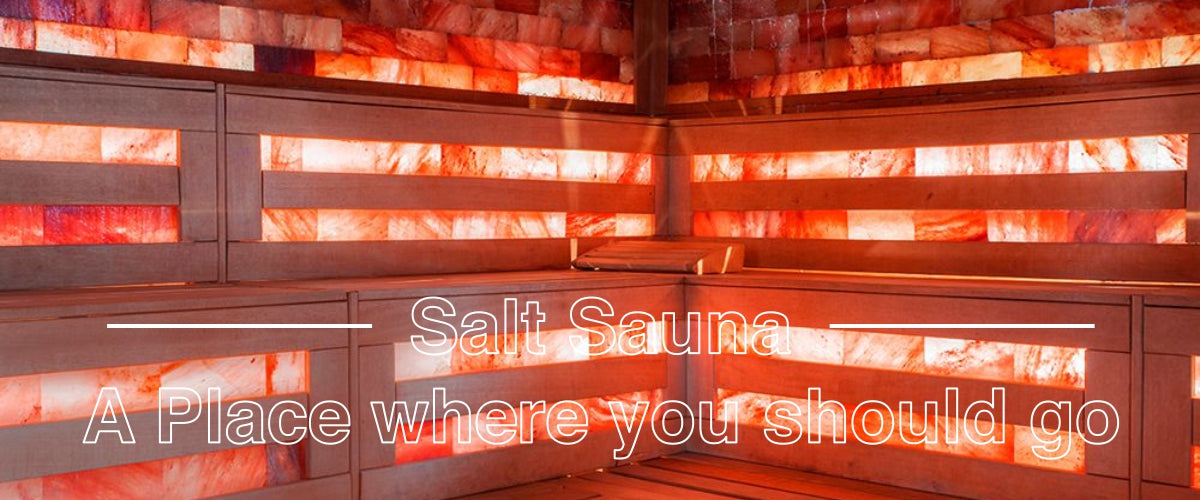(636) 642-4787
(636) 642-4787

The wellness sector is continuously progressing with fresh developments that strive to revitalize the mind and body. A novel concept that has garnered attention recently is the salt sauna. A salt therapy sauna, also referred to as a halotherapy sauna or a salt sauna, is a relaxation and wellness area that aims to offer the healing advantages of salt exposure. Unlike conventional saunas that depend on heat from rocks or steam, a salt sauna employs salt-infused air to produce a distinctive atmosphere. The idea draws inspiration from the therapeutic qualities found in salt mines and caves, which contain an abundance of salt particles in the air.
A salt sauna mainly consists of a salt generator that releases tiny salt particles into the air. People inside the sauna inhale these particles, which help improve their respiratory and skin health. Sodium chloride is the usual type of salt used, but some variations utilize other mineral-rich salts, such as Himalayan Salt.

The temperature inside salt saunas can range from 48 to 75 degrees Celsius. The humidity levels vary between 20% and 50%, creating favorable conditions for the natural salt ionization process.
Salt saunas are available, such as integrated sauna cabins, standalone rooms, and specialized salt therapy chambers. Certain places may also offer extra amenities like heated salt walls or floors constructed from salt bricks to elevate the overall ambiance.
The popularity of salt saunas is increasing due to their various advantages to individuals who choose to experience them. Here are several compelling reasons to consider incorporating salt saunas into your wellness routine.

Respiratory Health: The positive effects of salt saunas on respiratory conditions are well-known. Inhaling air infused with salt can relieve symptoms related to bronchitis, asthma, and other respiratory problems. Individuals with respiratory challenges may find relief from inflammation and improved lung function with the assistance of microscopic salt particles.
Skin Conditions: The skin can also reap substantial advantages from salt saunas. The exfoliating properties of salt particles can aid in unclogging pores, cleansing and detoxifying, and facilitating skin cell renewal. Salt's inherent anti-inflammatory and antibacterial characteristics render it advantageous for diverse skin ailments. A stint in a salt sauna can alleviate conditions like psoriasis, acne, and eczema. The salt-laden atmosphere can purify and rid the skin of toxins, resulting in a refreshed and revitalized sensation.
Reducing Stress: The serene atmosphere of a salt sauna can aid in lessening stress and inducing relaxation. The comforting surroundings, combined with the possible beneficial effects on skin and respiratory wellness, generate a comprehensive encounter that fosters general health. The peaceful milieu inspires mindfulness and could be a means of finding relief from the stress of everyday existence.
Moreover, the heated salt has the potential to generate negative ions that may elevate serotonin levels - a neurotransmitter associated with regulating mood, thereby promoting feelings of joy and optimism.
Detoxification: The natural detoxifying qualities of salt can help remove harmful substances from the body by spending time in a salt sauna. The combination of salt and heat can cause sweating, which helps remove impurities through the skin. This process of detoxification can leave you feeling revitalized and cleansed.
Improved Circulation: The salt sauna's warmth induces vasodilation or the expansion of blood vessels, and this can boost blood flow, resulting in improved tissue oxygenation and nutrient distribution across the body. Enhanced circulation is vital for cardiovascular wellness and can improve energy levels.
Enhanced Immune System: The antimicrobial properties of salt are well-known, and exposure to salt in a sauna can boost the immune system. Inhaling salt particles may aid in the reduction of respiratory inflammation and the clearing of mucus, which may lead to a more robust immune response. The elevated temperature triggers the body to generate antibodies and white blood cells, enhancing the immune system's ability to defend against infections.
Relief from Allergies: Individuals with allergies may find salt saunas advantageous. The anti-inflammatory characteristics of salt can assist in easing symptoms linked to allergies, granting respite from nasal congestion and other discomforts associated with allergies.
Holistic Wellness: Adding salt sauna sessions to your wellness routine can provide a holistic method for achieving optimal health. Salt saunas simultaneously tackle skin, respiratory, and mental wellness, making them a thorough and inclusive self-care process. Consider incorporating regular salt sauna sessions into your self-care routine to reap the potential benefits for your body and mind.
Building a salt sauna involves creating an environment that combines the benefits of a traditional sauna with the therapeutic effects of salt. Salt saunas are believed to have various health benefits, including improved respiratory function and skin health. Here's a general guide on how you might go about building a salt sauna:

Consult local building codes and regulations and seek professional assistance, especially for electrical work and structural components. If you need clarification on any aspect of the construction, it's advisable to consult with a contractor or sauna specialist.
Conclusion
Trying a salt sauna can provide a distinctive and revitalizing encounter with many health advantages. This wellness practice is worth exploring as it enhances skin and respiratory health, strengthens immunity, and promotes relaxation. Before starting any wellness routine, consulting with healthcare professionals is necessary, especially for individuals with existing health issues. You can enjoy the salt sauna's soothing and beneficial warmth by taking the necessary precautions.
Leave a comment